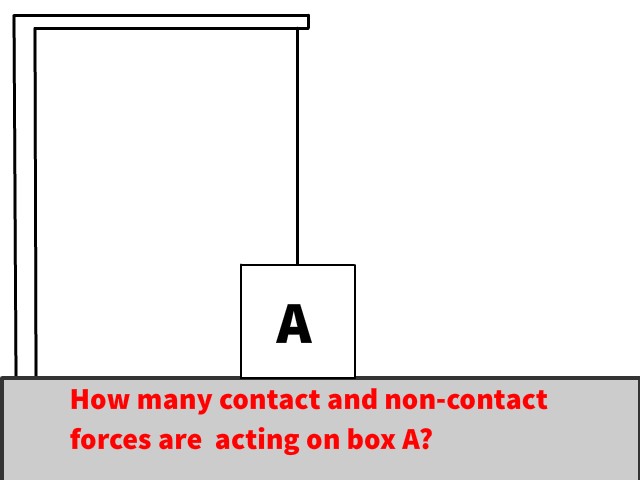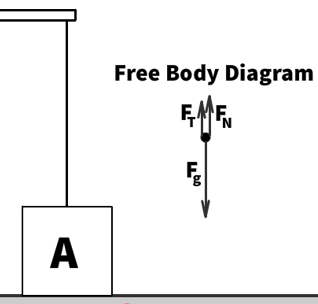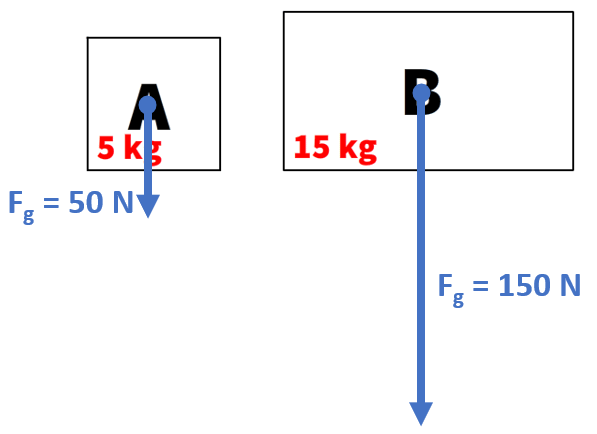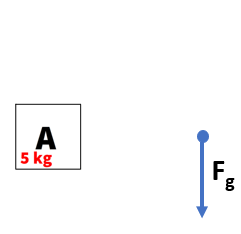Contact and Non-Contact Forces in Equilibrium
Understanding contact and non-contact forces is essential for analyzing forces in equilibrium. By mastering these concepts, you can create accurate free-body diagrams and explore the underlying physics in various situations.
What Are Contact and Non-Contact Forces?
Contact forces and non-contact forces play a pivotal role in physics. They govern how objects interact and move, whether through physical touch or forces acting at a distance.
Examples of Contact Forces:
- Applied Force: A push or pull exerted by another object.
- Normal Force: A reactive force that acts perpendicular to a surface in response to an object’s weight.
- Tension: A pulling force transmitted through a rope, string, or cable.
Examples of Non-Contact Forces:
- Weight: The gravitational force exerted by a massive object, such as Earth, on another object.
- Electrostatic Force: The interaction between charged particles, whether attractive or repulsive.

Free-Body Diagrams: Visualizing Forces
Free-body diagrams simplify the analysis of forces acting on an object. They use arrows to represent the magnitude and direction of forces.
- The object is depicted as a single dot.
- Each force is represented by an arrow, with the tail of the arrow starting at the object.
- Only actual forces—not their components—should be included in the diagram.
For instance, if a box is on a horizontal surface, its free-body diagram might include:
- Normal Force (FN): Directed upward, perpendicular to the surface.
- Weight (Fg) or (mg): Acting downward due to gravity.
- Tension (FT): If the box is attached to a rope, tension acts along the rope.

Q: How Many Contact and Non-Contact Forces are acting on box A?
- List the forces and if they are contact or non-contact
Calculating Weight: A Key Non-Contact Force
The force of gravity, or weight (Fg), depends on an object’s mass and the acceleration due to gravity. On Earth, gravity’s acceleration is approximately 9.8 m/s2, often rounded to 10 m/s2 in physics problems.
Formula for Weight:
Fg = mg
Where:
- Fg is the weight in newtons (N),
- m is the mass in kilograms (kg),
- g is the acceleration due to gravity (m/s2).
Example Weight Calculations:
For a 5 kg box:
Fg = (5)(10) = 50 N
For a 15 kg box:
Fg = (5)(10) = 50 N

These calculations show how gravity determines the force acting on an object, such as a box on the ground or in free fall.
Free Fall and Gravity: A Field Force
In free fall, gravity acts as a field force, pulling objects downward without requiring physical contact. This force is constant and proportional to an object’s mass, as described by Fg = mg. Field forces like gravity operate at a distance, distinguishing them from contact forces that require physical interaction.

When a 5 kg box is in the air with no air resistance, the only force acting on it is its weight ( Fg), caused by gravity. This force pulls the box downward with a magnitude determined by the formula:
Fg=mg
For a 5 kg box, this is:
Fg=(5)(10)=50 N
In real-life situations, air resistance also acts on falling objects, opposing gravity. This resistance increases as the object’s speed grows, ultimately leading to terminal velocity, where the downward force of gravity is balanced by the upward force of air resistance. At this point, the object falls at a constant speed. Without accounting for air resistance, the motion of objects in free fall remains purely influenced by gravity.
Air Resistance: A Contact Force You Can’t See
Though air resistance is invisible, it is a contact force caused by collisions with air particles. As an object falls, it pushes against these particles, creating a frictional force. The faster the object moves, the more frequent and intense these collisions become, increasing the force. This interaction makes air resistance proportional to velocity and dependent on the object’s shape and surface area.
Physics problems often ignore air resistance to simplify calculations and isolate the effects of a single force, making it easier to study and model specific interactions. This approach, while idealized, allows students to better understand concepts like gravity before tackling more complex scenarios. To explore air resistance further, visit Air Resistance: Friction Caused by Air Particles.
Equilibrium on the Ground: Contact and Field Forces
When a falling object reaches the ground, the balance of forces shifts. Gravity continues to act as a field force, pulling the object downward. However, the surface introduces a contact force—the normal force (FN)—that pushes upward to counteract the object’s weight (Fg) on contact.

On the ground, the 5 kg box experiences a weight (Fg) of 50 N, counteracted by an equal in magnitude normal force (FN) of 50 N, resulting in a net force (Fnet) of 0 N.
In this state, equilibrium is achieved. The two forces are equal in magnitude but opposite in direction, resulting in no net force. This balance ensures the object remains stationary. By ignoring additional factors like surface friction, physics problems simplify this interaction, helping students grasp the fundamental relationship between contact and field forces.
Why Physics Problems Simplify Reality
In real-world scenarios, forces rarely act in isolation. For example, air resistance, surface friction, and material imperfections often complicate motion. Nevertheless, physics frequently simplifies these situations in order to focus on core principles. By ignoring factors like air resistance in free fall or friction on surfaces, it becomes possible to perform a clearer analysis of fundamental forces, such as gravity and the normal force.
Furthermore, these idealized models serve as a crucial foundation for solving more complex problems. For instance, engineers initially rely on simplified force diagrams when designing stable structures or calculating trajectories. Later, they incorporate real-world variables like wind resistance or temperature changes. Ultimately, this balance between theory and reality is essential for both effective learning and practical application.
Before Equilibrium: A Box in Free Fall
Since there are no upward forces to counteract the weight, the box accelerates downward at 10 m/s2, which is the approximate acceleration due to gravity near Earth’s surface. This state is known as free fall, where the net force on the object is equal to its weight. Understanding free fall is crucial for analyzing how forces interact in motion, especially when transitioning to equilibrium.
Historical Perspective on Forces
The concept of forces has evolved significantly since Isaac Newton formulated his laws of motion in the 17th century. Newton’s work laid the foundation for understanding how forces interact and maintain equilibrium. His pioneering insights into gravity, published in the Principia Mathematica, continue to influence modern physics.
Practical Applications of Forces
The study of contact and non-contact forces isn’t limited to theoretical problems. Engineers and scientists use these principles to design structures, analyze motion, and solve real-world challenges, from constructing stable bridges to predicting the trajectories of satellites.
Explore Further
- Forward: Boxes: Weight, Normal Force, and Tension
- Back: Newton’s Laws of Motion
- Return: Main Forces Page
- Home: Stickman Physics
